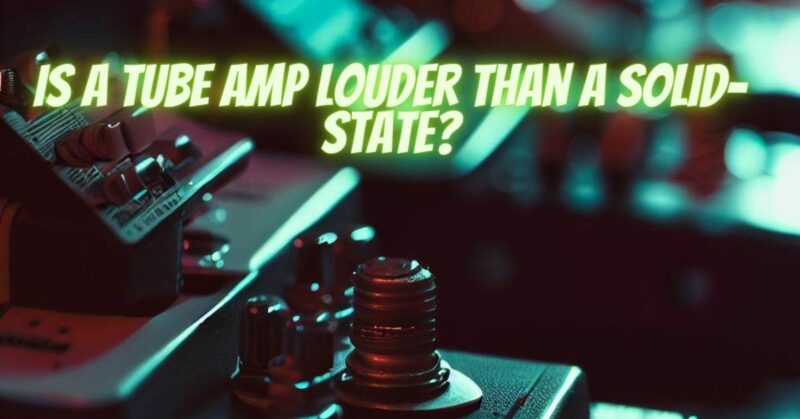The world of guitar amplification is rich with options, and one of the enduring debates among guitarists revolves around tube amplifiers and solid-state amplifiers. One question that often arises in this discussion is whether a tube amplifier produces a louder sound compared to a solid-state amplifier. In this article, we’ll delve into the differences between these two amplifier types and explore the factors that influence their volume levels.
Understanding Tube Amplifiers
Tube amplifiers, often referred to as “valve” amplifiers, use vacuum tubes (or valves) as their primary amplification components. These tubes create a warm, harmonically rich sound that many guitarists find appealing. Tube amplifiers are renowned for their ability to produce pleasing distortion when pushed to higher volumes.
Understanding Solid-State Amplifiers
Solid-state amplifiers, on the other hand, use semiconductor components such as transistors and diodes for amplification. They are known for their reliability, lightweight design, and clean, precise sound reproduction. Solid-state amplifiers are often favored for their ability to provide consistent and high-quality sound even at lower volumes.
Volume Levels: Tube vs. Solid-State
The perception that tube amplifiers are inherently louder than solid-state amplifiers is a common misconception. In reality, both types of amplifiers can achieve significant volume levels, but several factors come into play:
- Wattage: The wattage rating of an amplifier plays a significant role in determining its volume capabilities. A high-wattage amplifier, whether tube or solid-state, will generally produce more volume than a lower-wattage counterpart.
- Amplifier Design: The design of the amplifier circuitry, including the number and type of tubes (for tube amps) or transistors (for solid-state amps), affects its overall output. Some tube amps may have lower wattage ratings but produce substantial volume due to their design and tube selection.
- Speaker Efficiency: The efficiency of the amplifier’s speaker(s) also influences volume. A highly efficient speaker can produce more volume with less amplifier power.
- Cabinet Design: The design and size of the amplifier’s cabinet can impact the dispersion of sound, affecting the perceived volume.
- Preamp and Power Amp Distortion: Tube amplifiers are known for their pleasing distortion characteristics when pushed to higher volumes. This distortion can create the perception of increased loudness even at moderate wattage levels.
Which One is Louder?
Ultimately, the perceived loudness of an amplifier depends on various factors, including wattage, design, and speaker efficiency. It’s not accurate to categorically state that one type (tube or solid-state) is inherently louder than the other.
However, it’s essential to recognize that while tube amplifiers can produce rich and harmonically pleasing distortion when pushed, solid-state amplifiers often offer a cleaner and more precise sound reproduction, making them suitable for situations where clarity and articulation are paramount.
In the tube vs. solid-state debate, it’s crucial to understand that both types of amplifiers can produce ample volume when appropriately designed and matched with the right components. The perception of loudness is influenced by various factors, including amplifier wattage, design, and speaker efficiency. When choosing an amplifier, consider your specific tonal preferences, playing style, and performance needs to determine whether a tube or solid-state amplifier is the right fit for you. Ultimately, both amplifier types have their strengths and can deliver impressive volume levels, each with its unique sonic character.


